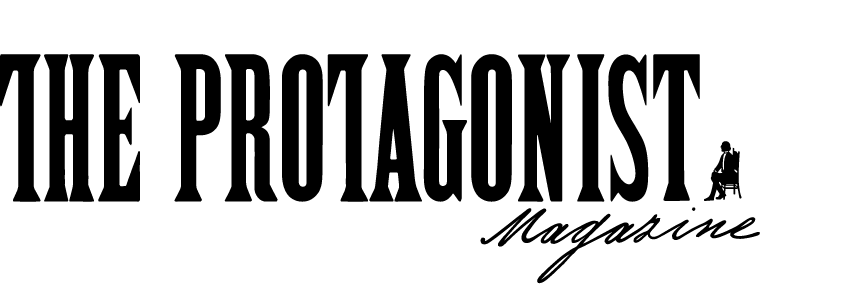Rachid Koraïchi: “Celestial Blue” at October Gallery London
Rachid Koraïchi, Detail of “Les ailes bleues des Anges (10)” (The Blue of Angel’s Wings). Photo: Birgitta Huse.
“Koraïchi’s forms are built with straight or curved lines, sometimes blocked together, Arabic writing, sometimes mirrored. Letters, signs and symbols which are combined in a unique way on each canvas are used by the artist as “associative proto-language”.”
“The 2024 show marks Koraïchi’s 77th birthday and includes sculptures and a vase from the artist’s “Lachrymatoires Bleues” series, referring to lachrymatory vials meant for gathering tears.”
Rachid Koraïchi: “Celestial Blue” at October Gallery London
Aiming to unite peoples and cultures
★★★★★
WRITTEN BY DR BIRGITTA HUSE, 13.04.2024
14 canvases , each sized 140 x 140 cm and each with the same blue ground with white script on it, hung at the same hight with the same distance towards one another. They all nearly seem to be the same – but only at first glance. The feeling somehow resembles a feeling of familiarity while travelling. When visiting a certain region of the world for the first time its people often seem to look the same in the eye of the traveller. It is quite common not to distinguish individual features at first – until having a closer look, entering direct contact and being interested in variations within the group. This holds true for Rachid Koraïchi’s works on canvas in his “Celestial Blue” exhibition at October Gallery, London, Bloomsbury.
Exhibition view “Celestial Blue”. Photo: Birgitta Huse
Each square canvas contains a square part which is filled with white repetitive forms like, again, squares, circles, ovals, triangles and stars. The forms are built with straight or curved lines, sometimes blocked together, Arabic writing, sometimes mirrored. Letters, signs and symbols which are combined in a unique way on each canvas are used by the artist as “associative proto-language”. The canvas series “Les ailes bleues des Anges” (“The Blue of Angels’ Wings”) “draws inspiration from the 61 love poems (nasibs) found in his [Muhyi al-Din ibn ‘Arabi, a mystic and writer born in Andalucia, Spain] Tarjuman al-Ashwaq, The Interpreter of Desire, published in 1215” – the exhibition catalogue explains. The scripts are free-hand improvisations reflecting a poem of Ibn ‘Arabi’s set. “[…] I wanted to use a deep blue to embody the depths of infinite space, the celestial realm of the heavens. […] The most appropriate way of making a distinct mark on this heavenly ground must be the purest of whites. For me, blue and white are the colours of life itself. I imagine a tiny white cloud passing across the immense face of a brilliantly blue sky. But that white cloud […] is at the mercy of the slightest gust of wind, which will dissipate it in an instant. For me this suggests how our transit through life is no more than a brief passage of uncertain chance” says Koraïchi.
Rachid Koraïchi, “Les ailes bleues des Anges (10)” (The Blue of Angel’s Wings). Photo: Birgitta Huse
Already as a child Algerian born Koraïchi was surrounded by scripts, writing being considered fundamental in his world. He grew up in a Sufi community where diversity and freedom of expression were tolerated he says. As in previous shows, with “Celestial Blue”, Koraïchi’s sixth solo exhibition at October Gallery London, the artist aims “to unite peoples and cultures by their shared inheritance, in spite of the tendencies for national boundaries and culturally conditioned patterns of thought to separate them”. He also proposes alternative perspectives to seeing only “northern countries [of the Mediterranean basin] as the cradle of ‘European civilisation.”
The 2024 show marks Koraïchi’s 77th birthday and includes sculptures and a vase from the artist’s “Lachrymatoires Bleues” series, referring to lachrymatory vials meant for gathering tears. Seven significant themes are covered in this show explains the artist. Fourteen canvasses, sized 140 x 140 cm - the importance of the number “7”, “an auspicious number charged with numerological significance for a wide variety of traditions”, and a signifier for perfection in the Sufi tradition, is a central point of reference.
Rachid Koraïchi, From the “Lachrymatoires Bleues” series. Photo: Birgitta Huse.
Rachid Koraïchi’s work is an inspiration not only for calligraphy and written art lovers but also for those having an interest in fruitful, constructive, collaborative, open minded, peaceful and knowledgeable intercultural communication despite any possible misunderstandings and difficulties.
“Celestial Blue” is on show at October Gallery London until 13.04.2024




